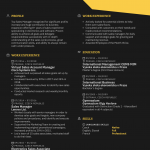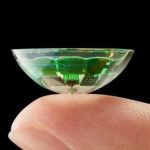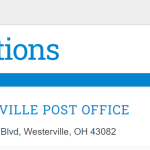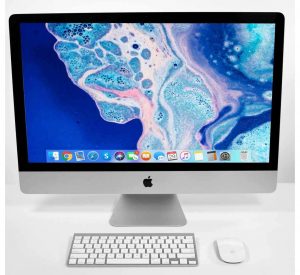The Basics of Web Design
If you want your website to attract more consumers, it’s essential to have a clear layout. Fortunately, web designers have a wealth of web design tools to choose from. They can incorporate one-click arrows and buttons that will guide users to the content they need. Content is the information you put on your website and plays a pivotal role in the conversion process. By designing the content for your website, you can set an appropriate tone and provide the right information on all pages.
Creating a website
There are many advantages of creating a website Web Design. Websites can be used for socializing, meeting friends, sharing information, trading, teaching, and more. The types of websites that you can create depend on your goals and target audience. You can create a website yourself or hire a professional developer to help you.
The first step in creating a website is to decide what purpose it should serve. It can be anything from a simple one-page portfolio to an online resume. You can even use a simple website to showcase your contact information, about us page, and other information. While these types of websites are not likely to get updated as often as larger sites, they still get plenty of traffic.
The next step in creating a website is designing the overall structure of the site. This can be done using special software or with a pen and paper. If you are not comfortable with the computer, hire a professional to help you. They can help you with coding and make the process faster for you.
When creating your website, you should always think like your customers. This means that your content should be optimized for search engines and designed for mobile devices. You should also pay close attention to images and make sure they look professional. Thankfully, smartphones have great camera quality. A minimalist design can make a good impression on customers.
Designing a website
Designing a website Web Design involves incorporating your brand’s visual and verbal identity into your site. The brand identity helps you communicate the message of your company in a consistent manner. The details of your website should make it easy to navigate and provide an engaging experience. The first thing that you should consider is how visitors will find what they are looking for.
The website’s design is only part of the success equation. The ultimate goal is to generate sales and revenues. Therefore, you need to learn how to make the most of the website’s features. To do that, you should develop a style guide, which will help your team adhere to the same style and implement co-marketing activities. In addition, your blog plays a significant role in promoting your website. Having helpful content that provides helpful information to your users will help to build trust and increase your website’s visibility.
Another important element in website design is the layout. The layout determines how materials are displayed on the page. You should use white space and grid-based designs to make your site user-friendly and easy to navigate. In addition, your website should be functional and easy to use. A competent web design platform should also include standards and sustainable elements.
The Wix Editor allows you to customize templates and use Wix’s drag and drop technology to design your website. In addition, there are plenty of tools and built-in features for you to use. Wix also has Wix ADI, an artificial intelligence platform that can create a fully functional website for you in minutes.
Elements of a website
The basic elements of a website are the page header, content, sidebar, and footer. The head section contains meta data, scripts, and custom favicons. It also contains styling elements. In addition, the footer contains links to important legal information. The sidebar and footer are important, as they help your visitors navigate your website and find what they are looking for.
Your website’s body contains the visual elements, such as images, text, hyperlinks, and videos. These elements are used to help your site stand out from the competition. You can improve the search engine rankings by choosing a unique domain name for your website. However, good domain names can be difficult to find, so you should carefully consider the brand you are trying to portray.
Layout of a website
The layout of a website can play a significant role in attracting and retaining visitors. It can help users navigate a site without having to look up the information they need. Good layouts keep visitors on the page without making it seem too cluttered or unfamiliar. They also promote better reading experiences.
Choosing a layout is the first step in website design. It is important to keep in mind the needs of your visitors and your business objectives. There are many different layouts available to choose from, so you should choose one that works best for your needs. A layout that is easy to navigate should provide the information your visitors are seeking and should support your CTA. Another important tip is to make sure the layout is responsive. This will ensure a better user experience and reduce bounce rate.
Colors play an important role in design. Colors can have a psychological or emotional impact on visitors. This could make it a good color choice for a website that promotes yoga. Color palettes should be carefully planned and used as a guide for website layout design.
A good website layout will not only look good, but it will also increase the chances of a successful website. It can break up long sections of text and organize content in an appealing way for the visitor. A good layout will encourage visitors to stay on the site and engage with the content. A good website layout will also help a website stand out from the competition.
Usability of a website
Usability is one of the most important factors when designing a website. This refers to the ease with which the user can move around a website and complete tasks. It is a crucial factor in retaining visitors. If the site is unusable, visitors will move on to another website.
The usability of a website is important not just for the developers, but for the end users as well. People do not buy products or services that have usability issues. Even current users will leave without purchasing because of this problem. As a result, you should consider the usability of your website before making any changes.
One way to measure usability is by conducting usability tests. This involves asking a series of questions to a sample of users. This will help researchers collect feedback in real-time. Alternatively, you can use a questionnaire or survey to gather information about a large number of users. The advantage of questionnaires is that they avoid ambiguity and give structured data to researchers.
Another way to improve the usability of a website is to use a minimalistic design. Most users look for a specific navigational format, so if you want your website to be accessible to the most number of users, use minimalistic design principles. Also, cut out unnecessary links. Keep the main navigation short and simple to understand, and make the menu easy to navigate.
Avoiding distractions in web design
When creating a website, it’s vital to avoid unnecessary distractions. Even the most beautiful web design can be a distraction, particularly when the designer uses a lot of visual effects. In the example below, you can see a gradient on every background, inconsistent card architecture, harsh shadows on the progress bar, and too many colors. By eliminating these distractions from your web design, you can increase your conversion rates and increase your engagement.
You can also avoid distractions by shutting down nonessential applications such as email and your personal electronic devices. Also, turn off your mobile phone’s ringer and turn off its notifications. If you must keep your mobile phone close to you, place it in another room or location. Moreover, blocking distracting websites may be useful, too.















